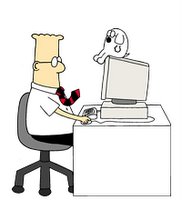cutting the cord

Future Now had a great post last week that discusses the paradigm shift that is taking place with the increasing prevelance of Internet connectivity. Coffee shops with wireless Internet access are emerging as ligitimate business hubs.
As the author makes clear, this phenomenon has numerous implications-- the most obvious being for architecture. With employees no longer tethered to LAN connected workstations, architects are not inhibited by previous restrictions but instead are free to design creative environments.
The larger questions then becomes, is the 'office' as it is traditionally thought of necessary at all? The age of the multi-level office building--with its solemn boardrooms and stifling cubicles-- may soon be coming to an end, replaced by hordes of laptop-laden nomads migrating from one hotspot to another in search of the perfect space.
This transition is likely to be embraced by planners because the use of public spaces provides an element of social interaction not found in an isolated office setting. This contextual change is liable to spark inspiration that would otherwise lay dormant










